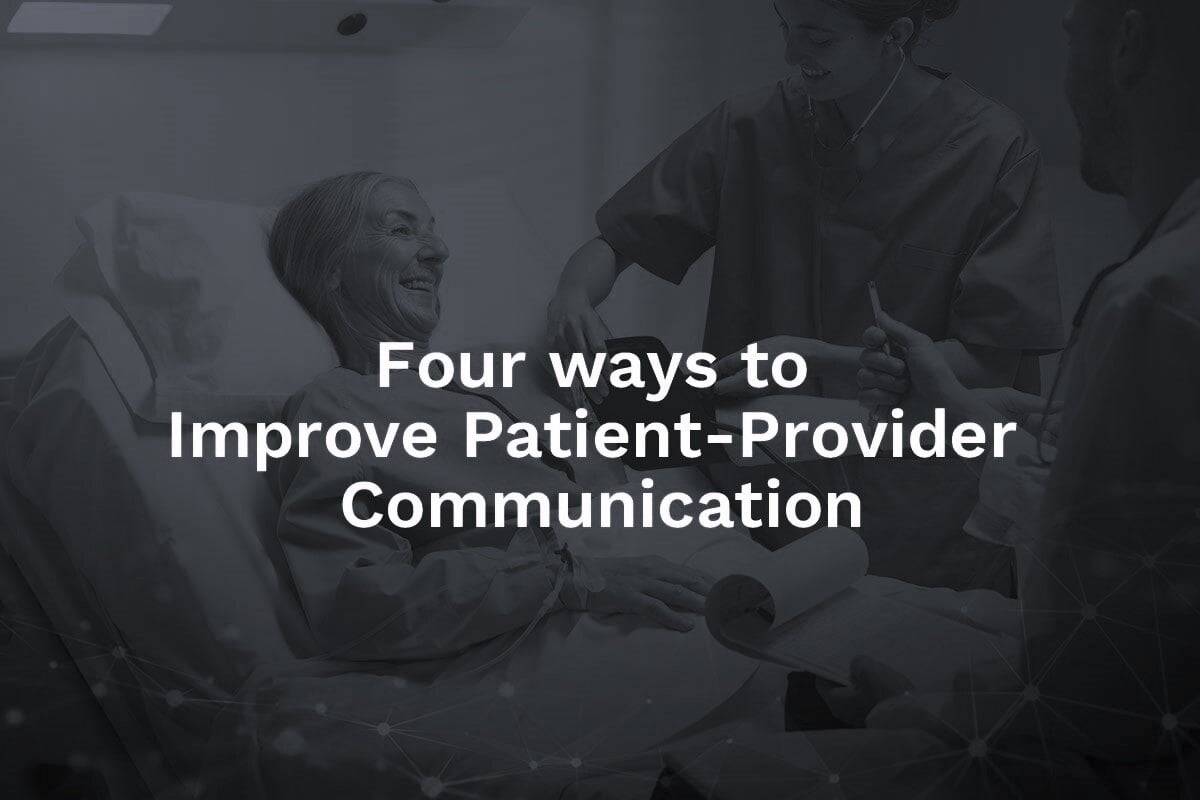
Four Ways to Improve Patient-Provider Communication
Implementing patient-centric communication at a healthcare organization might be challenging, but doing so undoubtedly improves the patient’s overall patient experience, ultimately resulting in better health outcomes. It is a well-known fact that patient-provider communication is crucial to make a shared decision on patient care. But, it can be challenging to build these crucial connections when a provider’s time is scarce and when a patient interacts only for a few minutes.
What a healthcare provider says and how they say directly impacts the patient, their family, and their behaviors. When there is a lag in communication, it can cause issues such as a rise in medical errors and hospital readmission rates for patients with chronic diseases such as congestive heart failure and diabetes, as well as lead to misuse of medications.
What is patient provider communication?
The cornerstone of patient engagement, this communication helps make a patient feel valued, thus improving patient satisfaction. For the entire healthcare process to be successful, communication from both sides must be very clear and efficient. It is not necessary that this type of communication needs to be verbal but can also be nonverbal.
Tough expressions, the position of the body, and even the use of space communicate essential messages. Further, sometimes how things are said can be important as the content. Moreover, this communication, which is generally face-to-face, can also take place across media such as email and the web.
What are the four ways to improve Patient-Provider Communication?
Nurture the relationship
A sense of trust between both parties is very important. So, to foster that trust, HCPs (Healthcare Professionals) need to keep certain points in mind. They should check with them, be curious about their background, ask them open-ended questions, ask about prior care, and even ask how they’ve been handling the issue thus far for a better understanding.
Educate them
Almost everyone is increasingly dependent on the internet for health resources but might come across with less-than-ideal readability and clarity. So this is an opportunity for the HCPs to help patients understand their condition and learn more.
Educate patients
People are increasingly searching the internet for health resources, but they may be met with less-than-ideal readability and clarity. This presents an opportunity for care teams to help patients understand their condition and learn more. When in doubt, it’s always good to provide a range of medical education resources such as reading materials, handouts, studies, and helpful websites. It’s also critical to guide patients to materials that can help them understand and further act on the information.
Improve internal communication
As patient-provider communication is important, so is internal communication, as they frequently go hand in hand. If it is poor and unstructured, there are challenges and poor patient care. As per a report by Medical Economics, 96% of healthcare executives say that poor internal communication leads to mistakes. Therefore, it’s always a good investment in continuing education for clinicians and the entire staff on good communication skills.
Patients appreciate when healthcare providers make things simple for them. If the communication isn’t effective over the phone, there are several other methods, such as email, instant messaging, or even automatic notifications, to guide them through their next steps.
Furthermore, it’s essential to be willing to reach patients through their preferred communication methods. In this current digital era, taking advantage of the most popular communication channels shows them that you genuinely care about keeping them informed.
World’s First Ad exchange for branded Healthcare Professionals advertising, Doceree, an EHR aggregator, is powered by Espyian, a proprietary HCP validation engine. This identifies and precision targets over 1 million* physicians across the entire United States of America for non-personal promotion and a personalized experience.